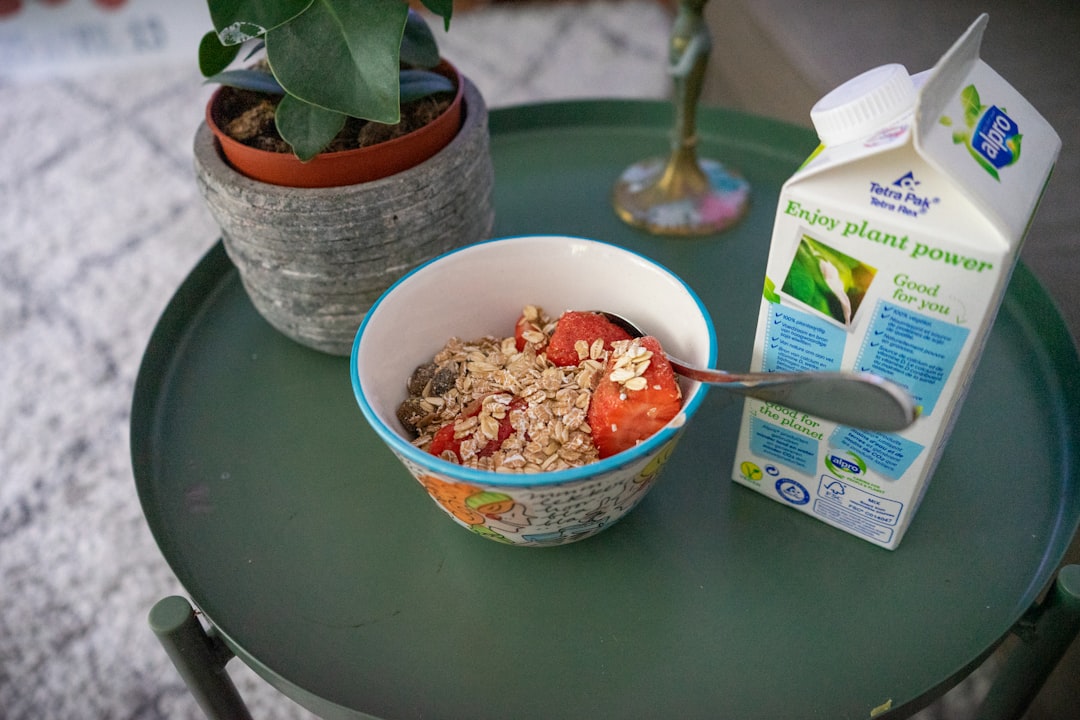Nomadic Nutrition Secrets For A Balanced Life On The Road

Introduction
Living the digital nomad life means your office can be a beachfront café in Bali, a co‑working space in Lisbon, or a tiny caravan parked in the Colorado Rockies. The freedom to work from anywhere is exhilarating, but it also brings a unique set of nutrition challenges. Unpredictable schedules, limited kitchen facilities, and constantly changing food environments can make it difficult to maintain balanced eating habits. This guide uncovers the nutrition secrets that help nomads stay energized, focused, and healthy no matter where the road leads.
Why Nutrition Matters for the Road
The brain consumes roughly 20 percent of the body’s daily energy. When you are juggling client calls, time‑zone meetings, and travel logistics, mental stamina becomes a premium resource. A diet that supplies steady glucose, essential micronutrients, and adequate protein supports concentration, mood stability, and immune resilience.
In addition, frequent movement and exposure to new climates put stress on the digestive system. A well‑balanced diet helps the gut adapt, reduces inflammation, and prevents common ailments such as constipation, indigestion, and nutrient deficiencies.
Core Principles of Nomadic Nutrition
Prioritise Whole Foods Over Processed Snacks
Whole foods—fresh fruit, vegetables, legumes, nuts, seeds, and lean proteins—provide a dense package of vitamins, minerals, fiber, and phytonutrients. Processed snacks often contain high levels of sodium, added sugars, and unhealthy fats that can cause energy crashes and bloating.
Aim for Nutrient Density
When you have limited storage space, choose foods that give the most nutritional bang for the buck. For example, a handful of almonds offers healthy fats, protein, vitamin E, and magnesium, while a bag of chips provides mainly empty calories.
Keep Blood Sugar Stable
Frequent spikes and dips in blood glucose can lead to irritability, cravings, and reduced focus. Pair carbohydrate sources with protein or healthy fats to slow absorption. A banana with peanut butter, or a bowl of quinoa topped with roasted vegetables and chickpeas, are excellent examples.
Hydration Is Non‑Negotiable
Dehydration often masquerades as fatigue or headache, especially in hot climates or high altitudes. Aim for at least 2‑3 liters of water per day, adjusting for activity level and temperature. Adding a pinch of sea salt or a splash of citrus can make plain water more appealing and replenish electrolytes.
Flexibility Over Rigid Rules
A nomadic lifestyle demands adaptability. Rigid meal plans can become a source of stress when a favorite grocery store is closed or a local market offers unfamiliar produce. Build a flexible framework that allows you to swap ingredients while keeping macronutrient ratios balanced.
Building a Portable Pantry
A well‑stocked pantry is the foundation of reliable nutrition on the road. Choose items that are lightweight, non‑perishable, and versatile.
Shelf‑Stable Proteins
- Canned tuna, salmon, or sardines (look for low‑sodium options)
- Shelf‑stable tofu or tempeh (vacuum‑packed)
- Dehydrated meat jerky (choose nitrate‑free varieties)
- Powdered egg whites (great for quick protein shakes)
Complex Carbohydrates
- Rolled oats or instant oat packets
- Quinoa, brown rice, or millet (pre‑cooked and freeze‑dried packets work well)
- Whole‑grain crackers or rice cakes
- Sweet potato chips (baked, not fried)
Healthy Fats
- Raw nuts and seeds (almonds, walnuts, pumpkin seeds, chia)
- Nut butters (almond, peanut, cashew) – look for single‑ingredient jars
- Olive oil or avocado oil in travel‑size bottles
Flavor Boosters
- Dried herbs and spices (turmeric, cumin, oregano, chili flakes)
- Low‑sodium soy sauce or tamari
- Apple cider vinegar or balsamic glaze
- Nutritional yeast (adds a cheesy note and B‑vitamins)
Fresh Add‑Ons
While the pantry provides the backbone, fresh produce adds vital vitamins and antioxidants. Choose items with longer shelf lives such as carrots, apples, oranges, cabbage, and leafy greens like kale that can last a week or more when stored properly.
Smart Shopping in New Cities
Every destination presents a unique market landscape. Here are strategies to make the most of local food options without compromising nutrition.
Scout the Neighborhood Early
When you arrive, spend a few minutes walking around the area. Identify supermarkets, health food stores, farmer’s markets, and ethnic grocery shops. Even a small corner store can surprise you with a decent selection of canned beans, fresh fruit, and whole‑grain bread.
Use Apps for Price and Quality Checks
Many cities have grocery delivery apps that show product images, prices, and user reviews. Checking these before you venture out can save time and prevent disappointment.
Embrace Seasonal Produce
Seasonal fruits and vegetables are usually cheaper, fresher, and more flavorful. Learn the typical seasonality of the region—citrus in Mediterranean climates, mangoes in Southeast Asia, root vegetables in colder regions—and plan meals around what is abundant.
Buy in Small Quantities
Instead of purchasing a large bag of rice that may go stale, buy a smaller portion that you can finish before it loses texture. Re‑stock as needed to maintain freshness.
Look for Bulk Bins
Some supermarkets have bulk sections for nuts, seeds, grains, and legumes. Bringing a reusable container allows you to buy exactly the amount you need, reducing waste and cost.
Meal Planning on the Move
A flexible yet structured meal plan keeps you from relying on fast food and helps you meet macronutrient goals.
The “Base‑Protein‑Veg” Model
Every main meal can be built around three components: a carbohydrate base, a protein source, and a vegetable side.
- Base – quinoa, oats, whole‑grain tortillas, or sweet potatoes
- Protein – canned fish, tofu, lentils, or pre‑cooked chicken strips
- Veg – raw salad, steamed frozen peas, or sautéed bell peppers
Mix and match these elements throughout the week to keep meals interesting.
Batch‑Cook When Possible
If you stay in a place for a few days and have access to a kitchen, prepare a large pot of lentil soup, a tray of roasted vegetables, or a batch of quinoa. Portion them into containers for quick reheating.
Keep a “Grab‑and‑Go” Box
Designate a small container for easy snacks: a handful of mixed nuts, a piece of fruit, a few whole‑grain crackers with hummus, or a protein bar (choose low‑sugar options). Having this box on hand reduces the temptation to purchase vending machine snacks.
Adjust for Time Zones
When traveling across time zones, your eating schedule may shift. Aim to keep the interval between meals consistent—approximately three to four hours—so your body’s internal clock stays regulated.
Cooking on the Go
Not every destination offers a full kitchen, but most provide at least a hot plate, microwave, or portable electric kettle. Here are cooking techniques that require minimal equipment.
One‑Pot Meals
Combine a carbohydrate, protein, and vegetables in a single pot. Add broth or water, bring to a boil, and simmer until everything is cooked through. Examples include a quinoa‑and‑black‑bean skillet or a rice‑and‑chickpea stew.
Microwave Hacks
- Steamed Veggies – place chopped vegetables in a microwave‑safe bowl, add a splash of water, cover, and cook for 2‑3 minutes.
- Egg Mug – whisk an egg with chopped veggies and a dash of cheese in a mug, microwave for 1‑2 minutes.
- Instant Oatmeal – combine oats, water, and fruit in a bowl, microwave for 1‑2 minutes, then stir in nut butter.
No‑Cook Meals
When you have no cooking facilities, rely on combinations that don’t require heat:
- Wraps – whole‑grain tortillas filled with hummus, sliced avocado, canned tuna, and shredded carrots.
- Salads – mixed greens tossed with beans, nuts, dried cranberries, and a vinaigrette made from olive oil and lemon juice.
- Cold Grain Bowls – pre‑cooked quinoa mixed with chickpeas, chopped cucumber, cherry tomatoes, and feta.
Portable Cooking Gear
Invest in a compact travel stove, a lightweight pot, and a collapsible silicone bowl. These items occupy little space in a backpack yet open up a world of cooking possibilities.
Embracing Local Cuisine
One of the joys of nomadic life is tasting the flavors of each culture. While exploring new dishes, keep nutrition in mind.
Identify Protein‑Rich Staples
Many traditional meals center around beans, lentils, fish, or tofu. In Mexico, black beans and corn tortillas form a balanced base; in Japan, miso soup and grilled fish provide protein and probiotics; in Ethiopia, injera paired with lentil stew delivers both carbs and protein.
Choose Whole Grains Over Refined
When a menu offers a choice between white rice and brown rice, opt for the whole grain. In some regions, alternatives like millet, barley, or sorghum are common and highly nutritious.
Moderate High‑Fat Street Foods
Street vendors often serve deep‑fried snacks that are delicious but calorie‑dense. Enjoy them occasionally, and balance the rest of the day with lighter meals rich in vegetables and lean protein.
Use Herbs and Spices for Health
Many cuisines rely on herbs and spices that have anti‑inflammatory or antioxidant properties. Turmeric in Indian dishes, ginger in Southeast Asian soups, and garlic in Mediterranean plates all add flavor and health benefits.
Supplement Strategies for the Global Traveler
Even with a well‑rounded diet, certain nutrients can be harder to obtain on the road. Supplements can fill those gaps, but they should be used thoughtfully.
Vitamin D
Sun exposure varies with latitude and season. In northern regions during winter, a daily 800‑1000 IU vitamin D supplement can support bone health and mood.
Omega‑3 Fatty Acids
If you are not regularly consuming fatty fish, consider an algae‑based omega‑3 capsule. This supports heart health and brain function.
Probiotics
Travel can disrupt gut flora. A daily probiotic containing multiple strains can aid digestion and immune response, especially after a period of antibiotic use or a major dietary shift.
Magnesium
Long flights, irregular sleep, and high stress can deplete magnesium. A nightly dose of 200‑300 mg magnesium glycinate can improve sleep quality and muscle recovery.
Multivitamin
A broad‑spectrum multivitamin ensures you get baseline micronutrients when fresh produce is limited. Choose one with minimal fillers and iron only if you have a known deficiency.
Hydration Tactics for Different Climates
Hot and Humid Environments
Sweat loss is rapid, so increase water intake and add electrolytes. A pinch of sea salt, a squeeze of lime, and a splash of honey create a natural sports drink.
Cold and Dry Altitudes
Even when you don’t feel thirsty, the body loses moisture through respiration. Set a reminder to sip water every hour, and consider a humidifier if you stay in a high‑altitude cabin for several days.
Jet Lag Days
Caffeine can mask dehydration. Pair coffee or tea with a glass of water to keep fluid balance in check.
Mindful Eating While Traveling
The constant buzz of notifications and the allure of new sights can lead to distracted eating. Practising mindful eating helps you listen to hunger cues and enjoy food more fully.
- Set a Meal Timer – allocate at least 15 minutes for each meal, away from the laptop.
- Engage the Senses – notice the colors, aromas, textures, and flavors before you start.
- Chew Thoroughly – aim for 20‑30 chews per bite to aid digestion and signal fullness.
- Check Hunger Levels – ask yourself if you are truly hungry or eating out of boredom or stress.
Creating a Routine That Supports Nutrition
Consistency does not mean rigidity. Establish habits that anchor your nutrition without feeling restrictive.
Morning Ritual
Begin the day with a glass of water and a protein‑rich breakfast—Greek yogurt with berries and nuts, or a smoothie containing protein powder, spinach, and frozen fruit.
Mid‑Day Check‑In
Schedule a brief pause for a balanced lunch and a short walk. This break improves digestion and mental clarity.
Evening Wind‑Down
Aim for a light dinner that includes vegetables and a lean protein source. Finish eating at least two hours before bedtime to support restful sleep.
Sleep Hygiene
Adequate sleep regulates hormones that control appetite. Strive for 7‑9 hours of quality sleep, using blackout curtains or a white‑noise app when staying in unfamiliar environments.
Community Resources and Support
Traveling solo does not mean you have to navigate nutrition alone. Leverage digital nomad communities for ideas, accountability, and shared resources.
- Online Forums – Subreddits dedicated to nomad health often share grocery store maps, local markets, and recipe swaps.
- Co‑Working Spaces – Many have communal kitchens where members exchange meal ideas and organize potlucks.
- Local Meetup Groups – Search for health‑focused meetups in the city you are visiting; they can introduce you to fresh market tours and cooking classes.
- Apps for Meal Planning – Tools like Mealime or Paprika let you store recipes, generate shopping lists, and adapt portions for travel.
Troubleshooting Common Challenges
Persistent Fatigue
- Check hydration levels and electrolyte intake.
- Review sleep duration and quality.
- Ensure you are getting enough iron, especially if you follow a plant‑based diet.
Digestive Discomfort
- Introduce fermented foods such as kimchi, kefir, or sauerkraut to support gut health.
- Reduce reliance on high‑fat fried foods.
- Consider a short course of digestive enzymes if you are eating many new foods.
Weight Fluctuations
- Track portion sizes using a hand‑portion method: a palm‑sized protein serving, a fist‑sized carb serving, and a thumb‑sized fat serving.
- Adjust snack frequency based on activity level.
Limited Kitchen Access
- Keep a stash of ready‑to‑eat meals like pre‑cooked quinoa packs, vacuum‑sealed salmon, and shelf‑stable hummus.
- Use a portable blender for smoothies that can serve as meal replacements.
Quick Recipes for the Road
Mediterranean Quinoa Bowl
Ingredients
- 1 cup cooked quinoa (cooled)
- ½ cup canned chickpeas, rinsed
- ¼ cup diced cucumber
- ¼ cup halved cherry tomatoes
- 2 tablespoons crumbled feta cheese
- 1 tablespoon olive oil
- Juice of half a lemon
- Pinch of dried oregano, salt, and pepper
Method
- Combine quinoa, chickpeas, cucumber, and tomatoes in a bowl.
- Drizzle olive oil and lemon juice over the mixture.
- Sprinkle feta, oregano, salt, and pepper.
- Toss gently and enjoy.
Thai Coconut Lentil Soup
Ingredients
- 1 cup red lentils, rinsed
- 2 cups water or low‑sodium vegetable broth
- ½ cup coconut milk (canned)
- 1 tablespoon red curry paste
- 1 cup frozen mixed vegetables (peas, carrots, corn)
- 1 tablespoon lime juice
- Fresh cilantro for garnish
Method
- In a pot, bring lentils and broth to a boil. Reduce heat and simmer for 15 minutes.
- Stir in coconut milk and curry paste; cook for another 5 minutes.
- Add frozen vegetables and heat through.
- Finish with lime juice and garnish with cilantro.
No‑Cook Mediterranean Wrap
Ingredients
- Whole‑grain tortilla
- 3 tablespoons hummus
- ¼ cup sliced roasted red peppers (jarred)
- ¼ cup canned artichoke hearts, drained and quartered
- Handful spinach leaves
- 2 tablespoons crumbled goat cheese
Method
- Spread hummus over the tortilla.
- Layer peppers, artichokes, spinach, and goat cheese.
- Roll tightly, slice in half, and eat immediately or wrap for later.
Final Thoughts
Balancing nutrition while living a nomadic lifestyle is a continuous learning process. By focusing on whole, nutrient‑dense foods, establishing flexible meal structures, and embracing the culinary treasures of each new location, you can maintain energy, mental sharpness, and overall well‑being. Remember that the goal is not perfection but consistency—a series of small, sustainable choices that add up to a healthier, more vibrant life on the road.
Carry these secrets with you, adapt them to the rhythms of your journey, and let food become not only fuel but also a source of joy and connection wherever you wander.
Random Posts

Finding Freedom Affordable Nations Offering Digital Nomad Visas
Discover budget-friendly countries that offer digital nomad visas, letting you work remotely while enjoying low living costs, tax perks, and easy residency options.
2 months ago

Sustainable Eating on the Go Guide for Nomad Lifestyle
Discover how nomads can eat healthy, low-impact meals on the move, balancing nutrition, eco-friendly choices and local culture with simple tools, tips and a sustainable mindset
2 months ago

The Most Inspiring Locations for Remote Professionals
Discover the top remote-friendly spots where fast internet, vibrant culture and soothing scenery turn work into an adventure, from bustling cities to mountain retreats and sunny beaches.
2 months ago

Wellbeing Strategies Every Digital Nomad Should Know
Boost your nomadic life with portable routines, balanced nutrition, daily movement, mental resilience and community tips, stay healthy, energized and thriving wherever you work.
1 week ago

African Havens for Digital Nomads
Discover Africa’s emerging digital-nomad hubs, vibrant cities with fast internet, affordable living, coworking spaces and rich culture, from Indian Ocean beaches to West African creative quarters
4 days ago
Latest Posts

Essential Software Every Remote Professional Should Use
Master remote work with essential tools: instant messaging like Slack, high definition video calls such as Zoom, and asynchronous voice apps. Streamline communication, stay connected and boost productivity.
1 day ago

Mastering Remote Work Productivity for Digital Nomads and Freelancers
Learn proven habits, tools, and tactics that help digital nomads and freelancers stay focused, deliver quality work, and maintain a sustainable lifestyle while traveling the world.
1 day ago

Tech‑Friendly European Towns Perfect for Remote Living
Discover Europe’s best small towns where fast internet, affordable living and vibrant tech communities let you work remotely while soaking up historic charm, lakeside views or mountain air.
1 day ago